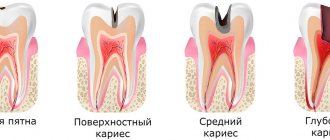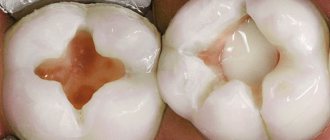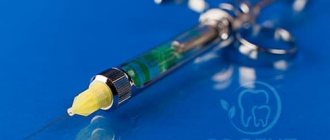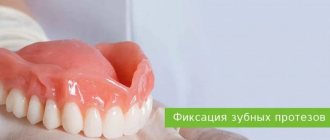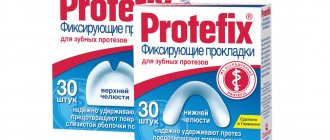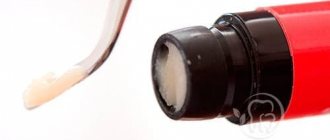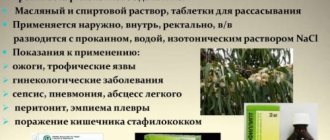Caries is a common dental disease that destroys the hard tissues of teeth. According to statistics, it affects about 95-98% of the population of economically developed countries. In the treatment of caries, medicinal pads can be used. In what cases and for what they are used, we will tell you in this article.
In this article
- What is a therapeutic pad in dentistry?
- In what cases is a lining used for caries?
- Why are medicinal pads used in the treatment of deep caries?
- How is a therapeutic napkin installed for deep caries?
- Materials of therapeutic pads
- How do combined pastes work?
- Pros and cons of using medicinal pads in dentistry
In what cases is a lining used for caries?
Caries is a slowly progressive pathological process that goes through several stages. At an early stage, a carious lesion looks like a light spot on the enamel, while there is still no hole or pain in the tooth. As the disease progresses, the spot turns into a carious cavity. At the stage of superficial caries, this cavity is located within the tooth enamel; with medium and deep caries, it affects dentin tissue.
For caries in the spot stage and the superficial form of the disease, pads with a therapeutic effect are not needed; for average caries, they can be used according to indications. Most often, medicinal dental pads are used for deep caries. The peculiarity of deep caries is that the carious cavity is located as close as possible to the pulp - the neurovascular bundle, or dental nerve. At this stage, treatment is quite painful and there is a high risk of complications in the form of pulpitis and periodontitis.
Dental linings help increase the effectiveness of treatment of deep caries.
Symptoms of deep caries
The main symptom of deep dentin caries is pain when the tooth is exposed to cold, hot, spicy or salty food. Discomfort also occurs when there is mechanical impact on the carious cavity with pieces of food or other objects. The main insidiousness of these symptoms is that they last only as long as the irritant acts. And as soon as it is eliminated, the pain stops. And if a person is not worried about anything, he may consider that visiting a doctor is not necessary. The process continues to progress and ultimately leads to inflammation of the root canals - pulpitis.
Why are medicinal pads used in the treatment of deep caries?
The purpose of a healing pad is to protect the pulp. After the dentist has removed the tissue affected by caries, cleaned and prepared the carious cavity for filling, a very thin layer of dentin, the bone tissue of the tooth, remains between it and the dental pulp. This creates a high risk of microbes entering the dental nerve and developing pulpitis. To prevent the spread of infection into the pulp, stop the inflammatory process and stimulate the production of a new layer of dentin, a special gasket is applied.
When a gasket is temporarily applied, the entire carious cavity is covered with it and a temporary filling is installed for a period of two weeks to several months. Permanent linings for deep caries are applied pointwise in the area of the tubercles of the neurovascular bundle. In the second case, along with the therapeutic one, an insulating gasket is installed.
How is a therapeutic napkin installed for deep caries?
Depending on the form and complexity of the disease, as well as the chosen method of caries treatment, the dentist can install the lining by direct or indirect application. The first option assumes that it is applied directly to the pulp area, ensuring direct contact between the gasket and the dental nerve. The method is used for tooth injuries with exposure of the nerve, for fibrous pulpitis. The second method is to apply a lining using dentinal tubules without direct contact with the pulp. It is often chosen for the treatment of deep stage caries and acute pulpitis.
Diagnosis of deep dental caries
The main task of diagnosing deep caries is to exclude pulpitis and periodontitis.
The first stage of diagnosis is a visual examination using a mirror and a dental probe. The depth of the lesion, its shape and the consistency of the dental tissues inside the carious cavity are assessed.
In acute deep caries, the carious cavity is filled with softened light-colored dentin; upon probing, the patient notes pain sensitivity from minor discomfort to acute pain. In a chronic process, there is most often no pain, since the carious cavity is lined with secondary dentin, which has a denser structure and a changed color (from brown to black).
During thermal diagnostics (testing sensitivity to cold and hot), a short-term painful reaction is noted, which subsides on its own after the irritating factor ceases. If there is a suspicion of infection of the pulp, or secondary deep caries that develops under the filling, X-ray images and radiovisiography are performed.
Materials of therapeutic pads
Several types of dental dams are used in the treatment of deep caries:
- varnishes, solutions, light-curing cements and polymers based on calcium hydroxide;
- zinc-eugenol and combined pastes.
Preparations based on calcium hydroxide have a powerful bactericidal effect. The application of these compounds to the bottom of the carious cavity prevents the penetration of microbes into the dental pulp and the development of the inflammatory process. Calcium hydroxide also promotes the production of new bone tissue in the area between the cavity and the nerve of the tooth.
Aqueous suspensions based on calcium hydroxide are usually applied in a thin layer to the bottom of the carious cavity, dried and a temporary filling is placed on top. They are replaced after 30-45 days. Also, in the treatment of dental caries, chemically cured cements are often used. They are pastes containing ether and hydroxide in a 1:1 ratio. These pastes harden directly in the patient's mouth and have excellent insulating properties in relation to fillings. Light-curing polymers must be used very carefully, because there is a risk of burning the dental nerve. At the same time, they have very high strength and, in the hands of a professional dentist, can be an effective means of treating caries. Zinc-eugenol pastes are widely used as an antiseptic for temporary fillings.
The basic principle of modern dentistry is a gentle approach to tooth tissue. Removal of the pulp should be avoided in cases where pathological changes in it are reversible and its preservation is possible. In such situations, a healing pharmacological effect on the pulp is necessary, which, having stopped the inflammatory process, would prevent its further spread and stimulate reparative processes. To solve these problems, therapeutic pads are used. They contain active substances for various purposes.
Materials for therapeutic pads should: have an anti-inflammatory, antimicrobial, odontotropic effect; do not irritate the tooth pulp; ensure strong sealing of the underlying dentin, connection with tooth tissues, cushioning and permanent filling materials; correspond to the physical and mechanical properties of permanent filling materials.
Dycal (Ivory) - Radiopaque material based on calcium hydroxide
Applications: - Direct and indirect pulp capping - Protective lining material before using base materials
Main — Has high strength characteristics — Does not interfere with the polymerization of restorations made of composites or materials based on acrylic resins — Release form — paste/paste
Standard packaging: 13 g base paste 11 g catalyst paste
Storage conditions: — Keep tubes tightly closed. - Store at room temperature.
Notes: - Color: ivory - Easy to mix, hardens quickly - Resistant to acid etching - Does not affect the color of the final restoration
Calcimol is a self-hardening, radiopaque calcium hydroxide paste intended for indirect pulp capping and is used as a liner under all conventional filling materials. Area of application: Calcimol is intended for indirect pulp coating and is used as a spacer under dental filling materials. Application: On a mixing block or glass plate, mix for 10 seconds. portions of Calcimol base and catalyst pastes of equal length (mixture ratio 1.2: 1 g/g), until a mass of uniform consistency and uniform color is obtained. Mixing should not be long! Introduce the prepared Calcimol paste into the cavity as quickly as possible. Work with Calcimol paste at room temperature (15°C - 25°C). At room temperature, Calcimol paste is workable within 2 minutes and binds in the mouth within 2 to 4 minutes. High temperature and humidity speed up the hardening process and reduce the time you work with the material, so hardening occurs faster in the mouth. Directions/precautions: Calcimol contains calcium hydroxide, salicylate, calcium tungstate, N - ethyltoluenesulfonamide. In case of intolerance or an allergic reaction to its constituent parts, do not use the drug. Wait for complete hardening before applying the filling. This is necessary to achieve sufficient stability during filling. Calcimol is not used as a temporary filling or a separate lining that bears the chewing load. After the expiration date, do not use the paste. At low temperatures, the catalyst hardens, so before use it is necessary to keep it for some time at room temperature or, if possible, briefly warm it up to 40°C. Calcimol acts as a highly alkaline drug; contact with the eyes (mucous membrane) should be avoided. Avoid contact with etching agents whenever possible (solubility). Storage: Store calcimol at normal room temperature. After use, close the tubes tightly and do not change caps between each other! Avoid exposure to moisture. Sales form: Packaging: base 13 g, catalyst 11 g
Calcimol LC is a light-curing, radiopaque, one-component material containing calcium hydroxide, intended for long-term linings and temporary insulation. Calcimol LC can be directly applied and polymerized under the influence of light from a halogen lamp. A high degree of stability eliminates the phenomena of resorption and dissolution. Application: When applying, ensure that the tooth surface is perfectly dry and that no contamination is present. Preparation should be carried out in accordance with the rules of filling technology. In areas in close proximity to the pulp, use an aqueous preparation of calcium hydroxide (for example, Calcicur for direct coating of the dental pulp). To avoid the formation of marginal folds and the penetration of bacteria into / on the cervical / proximal areas, long-term isolation is recommended (for example, Solobond M / Admira Bond). Place the required amount of Calcimol LC on the mixing block and apply with a suitable tool. If the thickness of the gasket is more than 1 mm, apply the preparation in layers and carry out polymerization. Calcimol LC hardens under the influence of light from a halogen lamp. Place the light source as close to the surface as possible (approximately 1 - 2 mm) and polymerize for 40 - 60 seconds. With a larger distance, the polymerization time increases. Carefully remove excess material using a rotating tool and apply a seal in accordance with the manufacturer's instructions. Directions/Precautions: Calcimol LC adheres to materials such as K+B belt filling materials based on methacrylates, certain impression materials (polyester), which can lead to damage or removal of the lining during core restoration. In these cases, it is recommended to apply an insulating layer (Thermoline, Vaseline, glycerin gel, etc.). Before processing, remove insulating materials. Due to the high degree of stability of Calcimol LC, it is not possible to remove excess material using a probe, since this would result in the loss of the entire gasket (use a rotating tool). Avoid direct exposure to light when working with Calcimol LC (operating lamp, daylight) and apply the drug as quickly as possible. Calcimol LC contains calcium hydroxide, TEGDMA, BHT, UDMA and amine. Persons with hypersensitivity to these components should not use the drug. Eugenol and other substances (for example, thymol) impair polymerization; any contact with these materials should be avoided. Short exposure times and insufficient light intensity will equally result in incomplete curing, so the light bulb and light guide must be checked regularly. For direct application using a cannula, disinfect after use.
Kavalite is a radiopaque, light-curing lining material that contains both hydroxyapatite and glass ionomer powder. Color – matches the color of natural dentin. After light curing, a thin film appears on the surface, which subsequently copolymerizes with the light-curing composite. If amalgam is used for filling, this film must be removed with a slightly moistened cotton swab after the material has been light-cured. Prepared and air-dried dentin is perfectly wetted by the material, since Kavalite has sufficient fluidity and is perfectly applied using an applicator or microbrush. APPLICATION TECHNIQUE 1. Prepare the cavity 2. Rinse the prepared cavity thoroughly and dry with air that does not contain oil particles 3. Drop the required amount onto glass or a special cup and close the bottle tightly. Apply Cavalite into the tooth cavity using an applicator or microbrush. Cover the entire dentin thoroughly 4. The thickness should be approximately 0.5 mm. Illuminate the material with a helium lamp for 20 seconds. 5. If the cavity is deep or difficult to access, extend the time to 30 seconds. 6. Remove excess material from the enamel using an excavator 7. The edges of the cavity should be etched with acid. Further restoration must be carried out in the usual sequence. Attention: Kavalite must be protected from light. Always close the bottle tightly. Take the material only immediately before use. Store at a temperature of 180-240C. Not recommended for direct pulp capping.
Ionosit-Baseliner is a light-curing, radiopaque compomer lining material. The controlled expansion of the lonosit-Baseliner compensates for the shrinkage of the composite filling. Intended use Lining material for composite restoration Recommended use 1. Before preparing the tooth, clean it, remove all residues after cleaning with a stream of water. It is not necessary to use a rubber dam if there is another way to control moisture. During use, avoid contamination with saliva. 2. Prepare the cavity using the usual adhesive method. Grind down the edges of the enamel. Protect the pulp in deep cavities. 3. Etch with your preferred product, such as Total-Etch. Follow the instructions for use of the material used. 4. Apply an adhesion promoter (eg Contax), following the instructions for use. lonosit-Baseliner can also be applied without an adhesion promoter. In this case, the adhesion is comparable to conventional cement (glass ionomer cement, phosphate cement). 5. lonosit-Baseliner can be used both as a regular spacer material (coating the base of the cavity) and to cover the entire cavity (to relieve stress). Apply lonosit-Baseliner with a brush or some spherical tool in a layer about 1 mm thick. 6. Cure with a suitable dental light for at least 20 seconds. 7. Apply composite filling material according to the manufacturer's instructions. It is recommended to use EcuSphere. Important notes • lonosit-Baseliner sticks to metal tools. Therefore, before the material hardens, clean the tools with a paper towel. • lonosit-Baseliner-photosensitive material. Avoid premature activation of the material by ambient light and close the lid immediately after use. • Lighting fixtures must emit light in the 450 nm mode and be checked regularly. Place the light source as close to the filling material as possible. • Do not remove the inhibitory oxide layer - it is necessary for adhesion to the next layer. • It is recommended to use a matrix. The instructions for use of other materials used must be followed. Storage Store in a dry place at a temperature not exceeding 25 °C. Do not use after expiration date.
KERR LIFE is a radiopaque durable material based on calcium hydroxide, recommended for direct or indirect pulp coating and as a cementing base for all restorative filling materials, including amalgams. LIFE mixes easily and provides sufficient working time to achieve multiple coats, yet it sets quickly and firmly but is easy to remove. Squeeze equal amounts of base paste and hardener paste onto a glass plate. Blot the spout of each tube before closing it, being careful not to mix up the caps. These procedures must be performed immediately before use. Mix the base and hardener with a small spatula (KERR - mixing spatula) for approximately 10 seconds until the mixture is homogeneous. Place LIFE material immediately onto prepared surfaces using a dry, clean applicator (KERR applicator). Clean the applicator head before reapplying the mixture after the previous application has been successfully completed to avoid contamination of the remaining material. If the procedure involves the use of rubber dam, the curing time of the LIFE material may be delayed due to decreased oral humidity. You can speed up the hardening time of the applied LIFE material by wetting it with water.
ADVANTAGES OF COMPOSITION Life (LIFE) Life (LIFE) ensures the formation of secondary dentin. KERR LIFE has a wonderful consistency that allows for precise application. KERR LIFE keeps the pulp alive. KERR LIFE exhibits high early compression stiffness and withstands normal pressure. KERR LIFE protects the pulp from high temperatures. KERR LIFE does not inhibit the polymerization of acrylic or composite preparations. KERR LIFE is acid resistant. KERR LIFE protects the pulp from permanent filling materials.
“Calcipulpin”, “Calcipulpin - F” are used as a protective layer of dentin in case of deep caries, in case of accidental opening of the pulp, as well as after its amputation. With increased sensitivity of teeth treated with an artificial crown. The material helps protect the pulp from harmful influences, primarily from microorganism toxins, and also stimulates the formation of replacement dentin. Applying medicinal paste to an accidentally exposed pulp is mandatory. This method is also used in the treatment of pulpitis using the biological method (pulp hyperemia, early stages of pulpitis in permanent teeth in children). The material in its composition contains calcium hydroxide, which has a highly alkaline environment; being at the bottom of the cavity, it neutralizes acids coming from the mouth or from cementing materials, thereby preventing the penetration of acids into the pulp.
Ingredients: sodium fluorine (only in “Calcipulpin - F”); calcium hydroxide (highest qualification); zirconium oxide; filler; plasticizer; paste former
Calcipulpin plus . The material is used as a protective self-hardening lining based on calcium hydroxide and hydroxyapatite in cases of direct and indirect pulp coating and isolation of the tooth cavity from filling materials. Helps protect the pulp from harmful effects, primarily from microorganism toxins. The material contains calcium hydroxide, which has a highly alkaline environment. Being at the bottom of the cavity, it neutralizes acids coming from the mouth or from cementing materials, thereby preventing the penetration of acids into the pulp. In direct contact with healthy pulp, the paste promotes the formation of secondary dentin. “Calcipulpin Plus” is a two-component system (paste + paste), when mixed, a homogeneous paste is formed that can be easily introduced into the cavity.
paste-A: calcium hydroxide, filler, plasticizer; paste-B: calcium tungstate, calcium phosphate, salicylic polymer, filler.
"Calcetin" (paste) is used for
- treatment of deep caries as a therapeutic lining material for permanent fillings made of any filling materials;
- regeneration of injured and inflamed pulp in reversible forms of pulpitis (traumatic, acute serous, chronic fibrous).
Dental material "Calcetin" contains calcium hydroxide, hydrophilic filler and plasticizer.
The calcium hydroxide included in the composition creates an alkaline environment (pH 12.8), which ensures a long-lasting bactericidal effect of the material and leads to the formation of a dentinal-cement barrier, creating conditions for the growth and formation of the tooth root, restoration of bone and periapecal tissue, increases the regenerative ability of the pulp and stimulates formation of secondary dentin.
“Calcetin” (lining) is available in the form of a ready-to-use paste or powder, which when mixed with distilled water forms a plastic paste. After introducing the paste into the cavity under the influence of a drying jet of compressed air, a coating is formed that protects the tooth pulp.
"Calcetin" (powder) Calcium hydroxide Indications for use:
- Indirect and direct pulp capping
- Pulpitis (reversible forms): traumatic, acute serous, chronic fibrous
- Apexification and apexogenesis
- Why choose powder:
- High calcium hydroxide content
- Antimicrobial effect (pH 12.8)
- Stimulates pulp regeneration and secondary dentin formation
- Compatible with any cushioning and filling materials
- If necessary, easily mixed with water to obtain a paste of the required consistency
Base it Indications for use:
- therapeutic and insulating pad for deep caries
- liner for moderate caries.
Material characteristics:
- Contains calcium hydroxyapatite
- High degree of chemical adhesion to tooth tissue due to the content of biocompatible monomers
- Has a cariostatic effect
- Stimulates the formation of secondary dentin through the release of calcium and phosphate ions
- Strength comparable to glass ionomer cements - ≥ 40 MPa
- Low degree of polymerization shrinkage (less than 1.5%)
- Radiopaque
- Has an alkaline environment
Compound:
- 4 syringes (2 g each)
- cannulas
How do combined pastes work?
The composition of combined pastes includes oils, fillers (zinc oxide or white clay), as well as medications. The therapeutic effect of a particular pad directly depends on the latter:
- Stimulating dentin growth and promoting enamel remineralization. These drugs are called odontotropic, they are based on fluorides, collagen, calcium glycerophosphate and other substances. They are used when it is necessary to increase the layer of bone tissue between the pulp and a deep carious cavity.
- Possessing anti-edematous and anti-inflammatory effects. They help stop the inflammatory process in the dental pulp; they are based on prednisolone and hydrocortisone. Typically, such preparations are temporarily placed at the bottom of the cavity and covered with a bandage on top. If the dentin layer next to the neurovascular bundle grows too slowly, then a spacer with an odontotropic effect is applied.
- Pads with an antiseptic effect based on metronidazole or chlorhexidine disinfect and prevent the growth of bacteria.
- Proteolytic enzymes contained in the drug are needed in the treatment of acute focal pulpitis, as well as in the treatment of deep caries.
Most combined pastes harden poorly and have low strength, so they are used as a temporary therapeutic material. After their removal, a different type of therapeutic pad is usually used.
Types of deep caries
There are several classifications of this disease.
For example, if deep caries develops as a result of the lack of treatment of superficial or medium caries, they speak of a primary process. Secondary deep caries forms under an installed filling in a previously treated tooth. In addition, acute and chronic forms of the disease are distinguished. With acute deep caries, patients often note tooth pain with various types of exposure to it. In our practice, we most often encounter this form of caries on apparently healthy teeth that have a “small hole.” During preparation, it turns out that underneath there is a wide and deep carious cavity. This case of deep caries is shown in the photo
Chronic deep caries is often asymptomatic due to the formation of secondary replacement dentin. It has a denser structure than normal and prevents food and drink from irritating the pulp. However, the presence of symptoms does not always indicate a chronic process. For example, if the cavity is covered with enamel, and the entrance to it is in a hard-to-reach place, irritants simply cannot reach the neurovascular bundle, and therefore there is no pain. However, if a piece of enamel breaks off, or the cavity is opened at a doctor’s appointment, the symptoms manifest themselves in all their glory.
Pros and cons of using medicinal pads in dentistry
The use of medicinal pads in dental practice has a number of advantages:
- They relieve inflammation, promote tissue regeneration, and help prepare the tooth for filling.
- Many drugs contain anesthetics that provide an analgesic effect, which is important when treating tissues near the sensitive dental nerve.
- Most materials are highly plastic, harden quickly and prevent the formation of microscopic cracks in the tooth.
In addition to the advantages, therapeutic pads have a number of disadvantages:
- They impair the adhesion of the filling to the walls and bottom of the cavity, which can shorten the service life of the restored tooth.
- If the technology for installing a medical pad is violated, the risk of tissue infection increases.
- Most materials dissolve when exposed to liquids, so they must be replaced frequently.
Despite the disadvantages, medicinal pads are still widely used in dentistry, as they have a wide spectrum of action and help solve many therapeutic problems.
